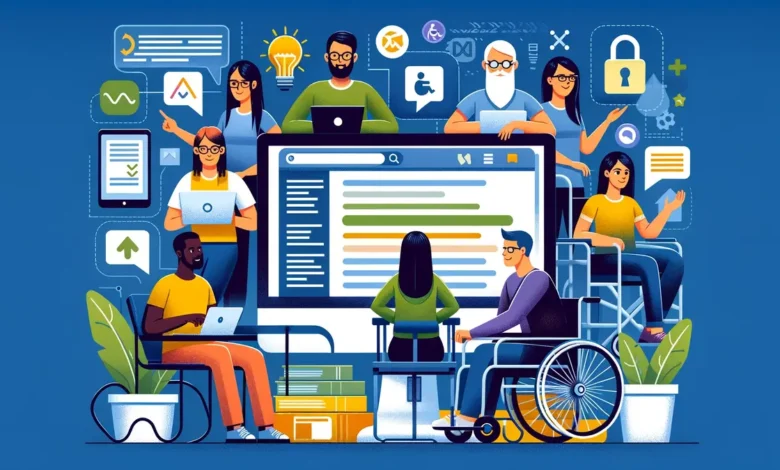
Table of Contents:
- The Rise of Real-Time Transcription Technology
- Enhancing Accessibility with Instant Transcription
- The Role of Transcription in Modern Communication
- Balancing Accuracy with Speed in Transcription Services
- The Integration of Transcription in Multimedia Content
- Language Support and Globalization Through Transcription
- Transcription, AI, and the Future of Real-Time Translation
- Privacy Concerns and Ethical Aspects of Real-Time Transcription
- Choosing a Real-Time Transcription Service: Key Features to Consider
Key Takeaways:
- Real-time transcription services are changing the accessibility landscape for the better.
- Developments in technology are improving speech-to-text accuracy despite the need for speed.
- Selecting the right transcription service can vastly improve communication accessibility.
The Rise of Real-Time Transcription Technology
The inception of real-time transcription might seem like a product of our modern world, but its roots go far deeper. Traditionally, transcription was a meticulous process, occurring long after words were spoken. Today, the story is starkly different. Technological advances have given rise to sophisticated software capable of converting spoken language into text with minimal delay. This technological leap enhances communication and fosters inclusivity at an impressive scale. This is why several companies leverage tools likevideo to text converter services to open up media to a wider audience.
Enhancing Accessibility with Instant Transcription
Accessibility is a critical feature in our collective push towards inclusive environments. Instant transcription, serving as a digital ear, grants those who are deaf or hard of hearing the ability to engage with live events as they unfold. Educational institutions, corporate settings, and even online platforms are implementing live transcription to cater to a diverse audience. It is a bridge to information, allowing equal participation in otherwise inaccessible dialogues. The impact is profound and immediate, changing lives one syllable at a time.
The Role of Transcription in Modern Communication
Effective communication is the backbone of understanding, and the role of real-time transcription in this domain cannot be overstated. It ensures that every voice is recognized and acknowledged regardless of how it is spoken or heard. In context, this means that meetings, workshops, and healthcare appointments are no longer environments where anyone is left out of the conversation. By transcribing spoken words, educational lectures are no longer restricted to those who can hear; business decisions are informed by inputs from all attendees, making the result as diverse as the voices that contribute to it.
Balancing Accuracy with Speed in Transcription Services
The tug-of-war between achieving breakneck transcription speeds and upholding text accuracy is a defining challenge of this technology. It is a balance that affects the utility and reliability of transcription services. Users expect and deserve both, but attaining this dual target is challenging. Each uttered phrase carries nuances, colloquialisms, and accents, which all must be interpreted correctly and swiftly. Tools that can master this balancing act are valuable in any setting where real-time transcription is needed.
The Integration of Transcription in Multimedia Content
The power of video is evident in its pervasive presence in our lives. From instructional videos and entertainment to news broadcasts, the content is consumed by a diverse viewership. However, to truly harness this power, accessibility must be a priority. Transcription services enable this, converting speech into subtitles and captions accompanying our visuals. Whether live or pre-recorded, the result is an inclusive experience that complies with accessibility standards and broadens market reach—an essential consideration in a content-rich digital age.
Language Support and Globalization Through Transcription
The global village is no longer a metaphor but a reality we live in. Transcription services play a significant role in bridging language barriers in this interconnected landscape. With capabilities to transcribe speech in multiple languages, these services allow for seamless communication between diverse groups, fostering understanding and facilitating international business transactions. What was once lost in translation is now found in transcription, connecting cultures and enabling cross-border knowledge exchange.
Transcription, AI, and the Future of Real-Time Translation
The future of transcription is firmly intertwined with the progression of Artificial Intelligence (AI). As machine learning algorithms become more sophisticated, the potential for real-time translation becomes increasingly tangible. Imagine attending a conference and reading subtitles in your language as the speaker talks; AI-driven transcription services bring us closer to this reality daily. The fusion of AI and transcription heralds a renaissance in communication technology that promises unprecedented convenience and connections.
Privacy Concerns and Ethical Aspects of Real-Time Transcription
As transcription services meld further into our daily lives, privacy and data handling concerns inevitably surface. The ethical use of technology, which handles potentially sensitive spoken words, must be addressed thoroughly. Service providers must navigate these concerns with transparency and robust security measures to protect user data, ensuring trust and integrity remain at the forefront of their operations.
Choosing a Real-Time Transcription Service: Key Features to Consider
Selecting a transcription service that suits your needs exceeds the surface value of speed and accuracy. It requires a deep dive into features such as language options, integration capabilities, and ease of use. These considerations can make or break the user experience and, thus, demand careful reflection when choosing a transcription platform. It’s about finding a service that performs well and aligns with the specific needs of individuals or organizations. The search for this fit is foundational to successful communication strategies.
Overall, real-time transcription technology has the potential to revolutionize the way we communicate. Breaking down communication barriers can create a more equitable and inclusive society where everyone has the opportunity to participate fully in conversations and access information.